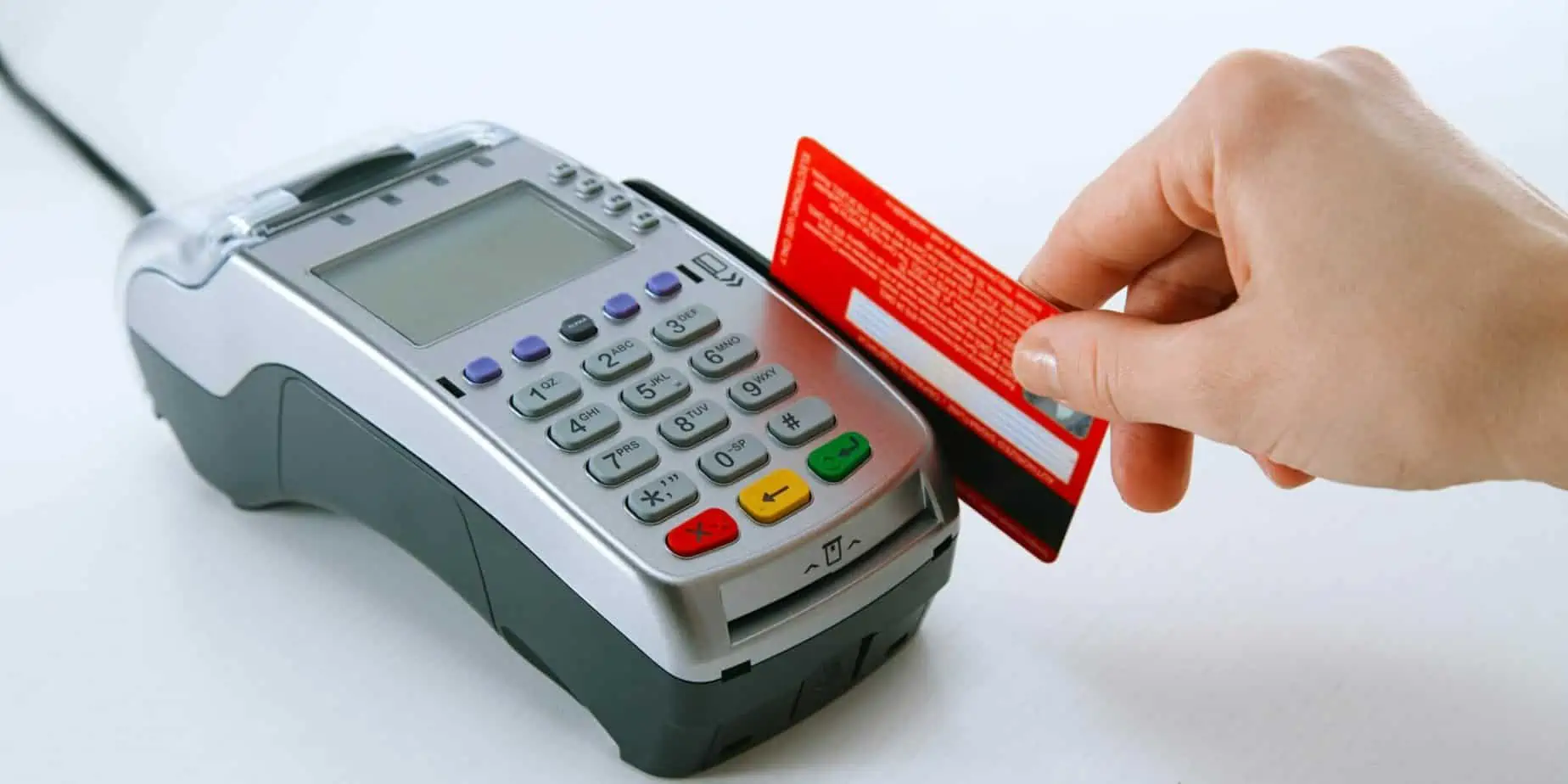Today, credit card processing has become a crucial element of the modern-day business world. Whether you run a small or large operation, you’ll process payments via credit cards. So, it makes sense to understand the costs and how basis points factor into the pricing for credit card processing.
From entrepreneurs to salespeople, you’d be surprised to find out how many business professionals don’t understand how basis points work in credit card processing.
The idea of using basis points is to precisely calculate small percentages and make it possible for payment processors to set consistent and transparent fees for merchants.
So, what are basis points in credit card processing, and how do they get calculated? Let’s find out:
Basis Point

What are the basis points? Well, a basis point refers to a measurement unit that represents 0.01% or 1/100 of a percent. You can express a basis point as a decimal point that equals 0.0001. While the abbreviation of basis points is BP, it is usually pronounced as bips.
You may have heard people say out loud, “fifty bip” rather than “fifty basis points”. In any case, the basis point is a standard term in finance. And the financial world revolves around charges and fees like credit card processing.
Importance of Basis Points in Credit Card Processing
In the context of credit card processing, basis points work as a processor’s markup through an interchange pricing model. Calculations of basis points determine whether or not its markup is competitive.
Basis points have become crucial in credit card processing since they help merchants determine the cost they will need to pay for every transaction. Remember that credit card processing costs can vary and depend on multiple factors.
For starters, the cost can vary based on the processing company, transaction volume, and credit card type. With a broad understanding of basis points, it becomes easier for a merchant to negotiate a much lower transaction fee and reduce the overall credit card processing cost.
Calculation of Basis Points
You can calculate basis points by multiplying a transaction value with an expressed rate. For instance, assume a transaction value of $1,000 with 20 basis points. It means there will be a $2.00 transaction fee.
You can use this formula to calculate the transaction fee:
Transaction value x (expressed rate/100) = Transaction Fee
So, based on the previous example, the calculation should look like this:
$1,000 x (20/10000) = $2.00
Not clear?
Here are some more examples to help you understand basis point calculations:
Assume a total transaction value of $500 with the expressed rate of 15 bips. It will make your transaction fee $0.75.
$500 x (15/10000) = $0.75
Assume a total transaction value of $2,000 with an expressed rate of 35 bips. This will round up the transaction fee to $7.00.
$10,000 x (10/10000) = $10.00
Assume a total transaction value of $100 with an expressed rate of 50 bips. It will make your transaction fee $0.50.
$100 x (50/10000) = $0.50
The key to understanding the calculations of basis points is to look at the expressed values through the lens of percentages. All it takes is to shift the decimal point to the left. For instance, 20 expressed bips would be 0.20 percent.
What Impacts Basis Points

Many factors impact the amount of basis points that a merchant services providers decides to charge a merchant. These factors can include the processing company, the monthly processing volume, and the way in which the credit cards are accepted (whether in person or over the phone or online.) In most cases, the increase in basis points on a merchant account is typically higher when there is a higher risk associated with cards acceptance and business industry.
Typically, when a markup is decided, that basis point rate is locked in for the lifetime of the account, and if charged on top of interchange rates regardless of the card type that is processed. Volume can impact the amount of basis points that are charged as well. Sometimes merchant services providers will offer companies discounts or alternative interchange rates depending on monthly processing volume or the industry that the merchant is in.
Percentages and Basis Points
You can express basis points in the form of whole numbers, like 5 bips or 10 bips. Now, these values signify a decimal and a percentage. You can use either of these values to calculate basis points. Say if you want to find out the basis points of 1% – all you have to do is divide the value by 100. On the other hand, if you want to turn a percentage into a basis point, you’ll need to multiply the value by 100.
Ideally, the best way to calculate basis points is to use a chart that makes calculations easier and faster.
- 1 bips = 0.01% or 0.0001
- 10 bips = 0.1% or 0.001
- 100 bips = 1% or 0.01
Mechanics of Basis Points
Basis points are used when you have to express and define small percentages, rates, charges, and fees. These values can apply to a variety of financial instruments, like treasury bonds, corporate bonds, equity securities, credit card processing, and interest rate derivatives.
When it comes to analyzing transactions, some use cases of basis points include comparing the fees of different funds. And if there is a change in interest rates, you can calculate the value. The main use case for basis point calculation is to determine the credit card processing fee.
When merchants use the interchange pricing model, the idea is to separate different processing costs to ensure transparency across all transactions. Interchange optimization is every transaction that can get the lowest possible rate.
Pros of Basis Points
Basis points allow merchants to calculate the transaction cost. Basis point calculation also enlightens consumers about their payment, which makes it easier to compare costs between different financial products.
Basis points help financial professionals discuss value changes, charges, and fees. Basis points also come into play when you compare values with interest rates. For instance, if an interest rate increases from 3% to 4%, the calculation would shed light on why there’s an increase of 1%.
You can make the calculations using the relative calculation method. In any case, remember that using basis points cuts out any confusion and makes things clear for merchants and consumers. Using the absolute calculation method, you can say that the 1% increase means a bump of 100 basis points.
What Else?
There are many perks of understanding basis points and credit card processing for merchants and consumers:
Better Negotiation
When you expand your understanding of basis points, it allows you to negotiate lower transaction fees with your credit card processing company. A broad understanding of basis points also ensures merchants don’t end up overpaying for credit card processing.
Cost Savings
When you can negotiate lower transaction charges and fees through basis points – it helps you save a significant chunk of money. It is ideal for small businesses that usually operate with limited budgets.
Improved Decision Making
A thorough understanding of basis points allows merchants to choose a suitable credit card processing company. You can make this informed decision by comparing different companies’ fee structures and opting for the one that provides the best value for small businesses.
Transparency
One of the most transparent and objective ways to calculate a standard transaction fee is through basis points. When merchants understand the calculations behind basis points – it gives them a sense of affirmation that they’re charged a market-competitive and fair price for their credit card processing.
Basis Points in Credit Card Processing

Credit card transaction fees get calculated using basis points. But usually, basis points work around the interchange pricing model that breaks down transactions based on an authorization fee, assessment fee, interchange fee, and transaction fee. Consumers and merchants use this data to find the most cost-effective way to process their transactions.
Most payment processors support interchange pricing and optimization, which allows merchants to adapt to the conditions of various transactions and reduce interchange rates. And these rates represent a big portion of credit card processing fees.
Naturally, merchants want to reduce interchange fees on a global scale. You can look at basis points as a reference that guides merchants on how to cut back on their interchange fees. Plus, basis points are a perfect way to reduce transaction fees, and make assessments, and comparisons to save money.
Summing Up
Once you expand your understanding of basis points, it’s important use that knowledge to better understand their role in credit card processing and your fees. Many companies now use dedicated payment processing solutions to automate their payments. So, when enterprises accept various digital payments, it increases their revenue and balances cash flow.
In fact, by understanding the mechanics and calculations of basis points, merchants can make better informed decisions around their credit card processing. This includes choosing a fair and ethical company responsible for managing credit card processing. In retrospect, the proper understanding of basis points allows merchants to negotiate suitable transaction fees and in the long run, it leads to significant savings for merchants.

